Crocs Are…Sunfish?
Posted by: Loren Coleman on September 19th, 2009
Can you tell the difference between the ocean sunfish images and the marine-going crocodiles pictured on this page?
If we are to believe officials in the Cayman Islands, local eyewitnesses who are reporting crocodiles are badly mistaken. They are merely seeing sunfish, say the officials.
According to the Cayman News Services, the reported sighting of a pair of crocodiles swimming off Seven Mile Beach on September 18, 2009, could well have been two harmless ocean sunfish (like the one pictured above) that the Department of Environment (DoE) found offshore of the governor’s residence. However, the DoE said officers will continue to investigate reported sightings of a crocodile in the vicinity of the Sundowner and White Sands condominiums as crocodiles do occasionally appear in the waters off the Cayman Islands. Crocodile sighting were also reported on September 17th.
“After receiving a call this morning about another crocodile sighting on Seven Mile Beach, Chief Conservation Officer Mark Orr immediately checked out the details. However, on entering the water, he found two sunfish,” said DoE Director Gina Ebanks-Petrie.
“A previous report of a crocodile in July this year off Seven Mile Beach was also later confirmed as a sunfish,” she said. “Two types of crocodiles are naturally found in the north-western Caribbean, namely the American and Cuban crocodile.
The American crocodile (Crocodylus acutus) has a wide range and can be found in Cuba, Jamaica, Mexico and the Southern States. The Cuban crocodile (Crocodylus rhombifer) is only found in south-western Cuba. However, skeletal remains found locally indicate that historically both species were naturally present in the Cayman Islands.
“Many crocodiles have a ‘wandering’ phase, in which young animals range far and wide in search of new habitat. The Cayman Islands falls within the natural range of both these species, therefore we should not be surprised at an occasional appearance off our shores,” Mrs. Ebanks-Petrie explained.
In Florida, some 500 – 1,200 American crocodiles thrive in the wild. To date there have been no recorded attacks by this species on humans in the United States where they are a protected species. In other countries, in most cases, when attacks by American Crocodiles do occur, the attack is directed towards a person who is trying to catch or harass the crocodile.
“For this reason, the DoE is adhering to the Florida Guidelines for dealing with American crocodiles. These recommend that when wandering individuals are located, they be left alone and not harassed. In most cases, they do move on, naturally and of their own accord,” she said.
So, did you correctly identify the right species in the photos above?
∆∆∆∆∆∆∆∆∆∆∆∆∆∆∆∆∆∆
Support the new, openly public, physical location of the International Cryptozoology Museum in downtown Portland, Maine. Joins us in this great adventure.
Please click on the button below (not the one up top) to take you to PayPal to send in your museum donation.
If you wish to send in your donation via the mails, by way of an international money order or, for the USA, via a check or money order, please use this snail mail address:
Loren Coleman
International Cryptozoology Museum
PO Box 360
Portland, ME 04112
Thank you, and come visit the museum at 661 Congress Street, Portland, Maine 04101, beginning November 1, 2009!!
About Loren Coleman
Loren Coleman is one of the world’s leading cryptozoologists, some say “the” leading living cryptozoologist. Certainly, he is acknowledged as the current living American researcher and writer who has most popularized cryptozoology in the late 20th and early 21st centuries.
Starting his fieldwork and investigations in 1960, after traveling and trekking extensively in pursuit of cryptozoological mysteries, Coleman began writing to share his experiences in 1969. An honorary member of Ivan T. Sanderson’s Society for the Investigation of the Unexplained in the 1970s, Coleman has been bestowed with similar honorary memberships of the North Idaho College Cryptozoology Club in 1983, and in subsequent years, that of the British Columbia Scientific Cryptozoology Club, CryptoSafari International, and other international organizations. He was also a Life Member and Benefactor of the International Society of Cryptozoology (now-defunct).
Loren Coleman’s daily blog, as a member of the Cryptomundo Team, served as an ongoing avenue of communication for the ever-growing body of cryptozoo news from 2005 through 2013. He returned as an infrequent contributor beginning Halloween week of 2015.
Coleman is the founder in 2003, and current director of the International Cryptozoology Museum in Portland, Maine.

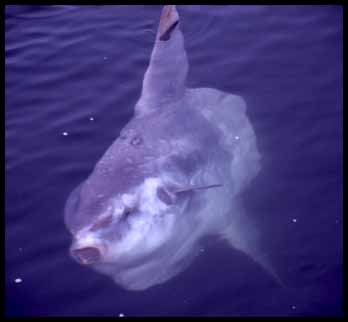
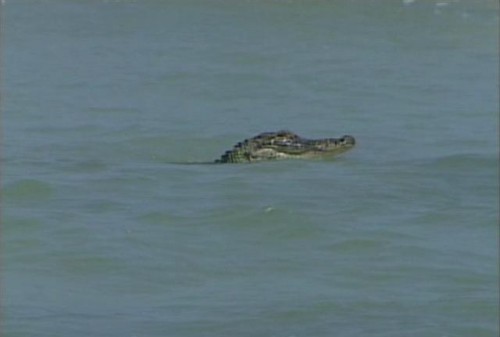
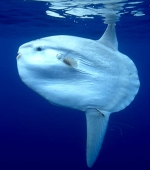
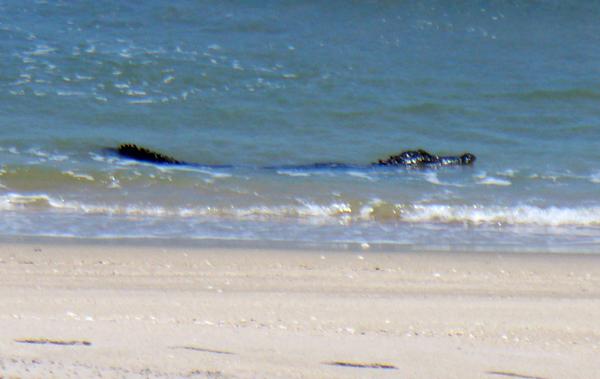
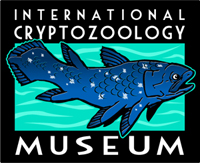









Gee Golly. The sunfish looks nothing like a crocodile. A sunfish, that’s just absurd.
Mistaking a Sunfish for a croc, kinda unlikely, then again, some here saw thunderbirds instead of lamp posts.
Well, I go with two things: frequency and coherence.
I’m not dragging the lake unless everyone in town has seen the croc. But that does not mean that an isolated sighting isn’t exactly what it appears to be.
I just wish officials would stick to this one rule.
If the sighting wasn’t followed up directly, and an actual animal confirmed that could be directly and indubitably traced to what the witness saw, then simply say: it’s possible. We don’t know, but it’s possible. If circumstantial evidence indicates that a mundane animal might have caused the sighting, then say: here’s what we think, but of course we can’t be sure.
That’s what a scientist would tell you to do.
Yeah that’s pretty bad, but I still have to say that nothing is as bad as Texas Parks and Wildlife officials asserting that people who report seeing bigfoot are seeing river cane blowing in the wind.
Uh yeah, okay, whatever.
DWA, that would be the ocean you would be dragging off the Caymans, not a lake. Rather big task, at that.
Agreed, a sunfish is a rather odd explanation for a croc sighting – particularly if crocs have been known to appear in the area.. I would guess croc, though even “it’s a log” would seem more likely than sunfish. Maybe they thought head-on it would look more similar?
Daryl Colyer: Yeech. That’s pretty bad, indeed. 🙁
To be honest, I don’t buy the “Sunfish Theory.” I’m not saying these Crocs seen could not have been another animal MISTAKEN for Crocs—but this? Er…No.
DWA: I agree it could be something else—but Sunfish? Really?
I’ll go one further than the obvious difference in appearance between the two. Let’s talk about the differences in behavior between the two.
I’m not sure exactly how many crocidilians have been sighted in the area, but they are much more likely to be seen closer to shore than ocean sunfish, especially American alligators. Ocean sunfish are pelagic, meaning they are open water animals, and would likely not be found very close to the shore.
Also, many seem to think that sunfish are always found near the surface, but this is not true. Ocean sunfish actually spend a good amount of time deep underwater, specifically in the sunlit zone of water up to 200 meters deep, the epipelagic zone, as well as the deeper zone from 200 meters to 1,000 meters where there is not quite enough light for photosynthesis, or the mesopelagic zone.
While it appears that in this case some sunfish where found near shore, due to the difference in appearance and especially typical behavior, I am hesitant to say that all sightings of crocs or alligators could be the result of misidentifications of sunfish.
Perhaps the rarity of such near shore sunfish sightings could have contributed to surprising some, but wouldn’t locals know what a sunfish looks like? Why say they saw a croc when they could just say they saw a sunfish if that were the case? A lot of places have sunfish, in fact they are found all over the world, yet we don’t have crocodile sightings everywhere they are found.
I appreciate looking for mundane answers when they fit, but dismissing all reports as sunfish doesn’t really answer everything for me. Perhaps it is worth considering that when these eyewitnesses say they saw a crocodile or alligator, then maybe that is what is being described. It seems worthy of serious inquiry.
Yeah. Mistaking a croc for a sunfish. Crocs don’t have fins that stick up out of the water, do they? Thought not.
I do wish local officials would at least go check these things out when possible, instead of passing it off as something else. Most of the time they are probably correct, but someone’s life could be at risk if the official is wrong.
When I was a kid, I went to SeaWorld a lot (back when it was actually a overglorified aquarium, before it was a “Adventure Park”). In the shark aquarium there was a rather large tank that had some random species in it. There were I think bull sharks, sawfish, some other large fish, and two sunfish. One time I was there and people thought the sunfsh was a great white shark…
So apparently sunfish are misidentified fairly often…?
Loren: I reserve the right to be figurative. 😉 What I meant was “take extreme measures,” among which dragging the lake – or particularly the ocean – might rate.
Daryl: that’s indeed a new one. I’m writing that one down. “No, it wasn’t a bear, it wasn’t a man, it wasn’t a horse’s butt, AND DON’T DO RIVER CANE ON THIS ONE, OK?!?!?!”
See you at the Conference. I’ll introduce myself.
Interesting. My stepbrother and I once found a sunfish trapped in a tide pool at the mouth of Partington Cove, near Big Sur, California. It had a nasty looking scar across one side, and we thought perhaps it had been injured, and that the injury was what caused it to end up so close to shore and stuck in a tide pool. We freed it and got it into the water just off the rocks, but it did not appear to be swimming very strongly, and we figured it would likely end up as food for something else pretty quickly. We were both impressed by the large size of this fish (we had quite a job of it trying to catch and then release it, without harming it or ourselves while negotiating those sharp and slippery rocks), but it’s very difficult for me to see how anyone would mistakenly identify such a fish as a crocodile, or any other type of reptile.
I can’t see how they’re mistaken for each other at all….some people…crazy imaginations.
I think some people see what they WANT to see